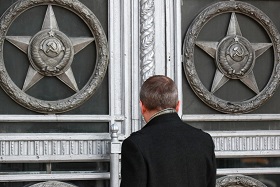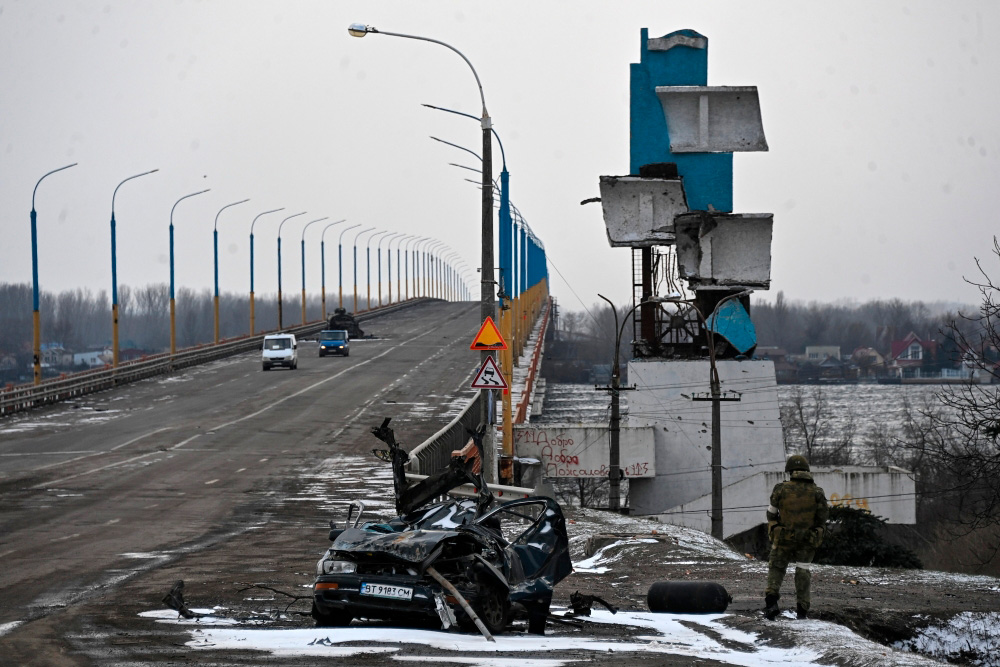Diplomatic manoeuvring by Russia and Ukraine on the issue of a peace agreement, or at least a ceasefire, naturally raise the question of a possible lifting of Western sanctions against Russia. American officials have already made it clear that Washington will lift the previously-imposed sanctions if the current military operation is ceased.
The US is trying to use sanctions as an incentive to push Moscow to engage in negotiations. The logic here is simple: the continuation of the conflict means the escalation of sanctions, whereas the end of the conflict would lead to the abolition or mitigation of restrictive measures. However, this simple and logical model does not work in practice. Moscow most likely does not believe sanctions will be lifted or suspects that they could be re-imposed alongside a new set of political demands. Recent historical experience confirms such fears.
From an institutional point of view, the lifting of new sanctions still seems to be an achievable task. In the United States, they are enshrined in the form of presidential executive orders and the directives of relevant departments. Despite the abundance of bills on sanctions against Russia in the US Congress, none of them has become law. However, two bills have already passed in the House of Representatives. H.R. 6968 suggests the legislative suspension of Russian fossil fuel supplies to the US, and H.R. 7108 suggests the freezing of normal trade relations. If these norms are enshrined in US law, their repeal will become practically impossible. At best, these norms could later be suspended by presidential decree. As far as the EU is concerned, the lifting or easing of sanctions will require a unanimous decision of the EU Council. Differences may arise here, but it is easier to overcome them than in the US Congress. In the UK, the executive branch has considerable manoeuvre in modifying the sanctions regime. Therefore, technically, their significant reduction is quite possible. Bottom line, the lifting of sanctions is largely feasible without unnecessary delay.
At the same time, even if a compromise is reached between Russia and Ukraine, the sanctions may remain partially or in their entirety for political reasons. There are two key factors which would result in their possible conservation. The first is the political capital of the national leaders of the initiating countries. Russophobia today is so pervasive that any steps back are fraught with the loss of political points. The second, and more important factor, is a possible attempt to squeeze the maximum concessions out of Russia.
At the same time, the West may well show flexibility in easing sanctions, based on its own economic interests. Some measures have caused significant damage to the initiators themselves. Most likely, the moves towards ousting Russia from raw materials markets, as well as its technological isolation, will not change. However, the mitigation of the economic costs of such transit, especially in the short term, is quite capable of leading to some progress.
The inclusion of sanctions in the formula for a compromise on Ukraine is quite possible. Total pessimism is hardly desirable here, if only because the initiators themselves incur serious costs and may be ready to reduce them. However, the complete lifting of the new sanctions and a return to the status quo on February 21, 2022 also appears to be an unlikely, if not unfeasible alternative.
Diplomatic manoeuvring by Russia and Ukraine on the issue of a peace agreement, or at least a ceasefire, naturally raise the question of a possible lifting of Western sanctions against Russia. American officials have already
made it clear that Washington will lift the previously-imposed sanctions if the current military operation is ceased.
The US is trying to use sanctions as an incentive to push Moscow to engage in negotiations. The logic here is simple: the continuation of the conflict means the escalation of sanctions, whereas the end of the conflict would lead to the abolition or mitigation of restrictive measures. However, this simple and logical model does not work in practice. Moscow most likely does not believe sanctions will be lifted or suspects that they could be re-imposed alongside a new set of political demands. Recent historical experience confirms such fears. Is it possible in this case to put sanctions on the negotiating agenda at all? Yes, it’s possible. But such a formulation of the question requires a discussion on the specific parameters of sanctions de-escalation, rather than abstract promises or positions of requests. In turn, the specifics imply the segmentation of the introduced restrictions into separate components. Their cancellation can proceed either sequentially or simultaneously.
The key segments of restrictive measures against Russia include the following:
First. Sanctions against the Central Bank, the Ministry of Finance and the National Welfare Fund. Among other things, we are talking about the freezing of Russian reserves in the EU. There is the prospect of these funds being transferred to Ukraine for the restoration of the armed forces and infrastructure. It should also be noted here that the freezing and risk of confiscation affects Russian state property, as well as the assets of blocked Russian individuals and organisations, from bank accounts and real estate, to yachts and football clubs. In fact, we are talking about forced seizure. Given Russia’s high involvement in the world economy, such a process could turn into an unprecedented expropriation of the state and private property of Russia and its citizens abroad
Second. Financial sanctions against Russian banks, infrastructure, energy and other companies. Blocking sanctions (that is, a ban on transactions and blocking assets) of a number of banks and companies, bans on making settlements in dollars (restriction on the use of correspondent accounts in US banks), and restrictions on lending stand out here. The financial sanctions include a ban on the transmission of financial messages in the interests of a number of Russian financial institutions.
Third. Blocking sanctions against major Russian businessmen (in Western terminology—“oligarchs”). Similar sanctions against political figures—high-ranking politicians and members of their families.
Fourth. Airspace closure, along with the denial of leasing contracts and maintenance of civil aircraft. Here, a number of countries have closed their seaports to Russian ships.
Fifth. Bans on imports of Russian fossil fuels, iron and steel products, seafood and other goods that have already been introduced or are only planned.
Sixth. Bans on investments in the Russian energy sector and other sectors of the economy.
Seventh. Restrictions on the export to Russia of a wide range of goods, including oil refining equipment, lasers, navigation equipment, certain categories of cars, computers, marine engines, and many other categories of industrial and consumer goods. Separately, it is worth highlighting the export control of dual-use goods, although they existed before.
Eighth. A ban on the import of cash dollars and euros into Russia, as well as restrictions on opening deposits above certain amounts in some initiating countries.
Ninth. The exit from normal trade relations with Russia.
Tenth. Tightening visa restrictions.
These measures differ in detail from country to country. For example, a ban on the supply of Russian fuel has already been introduced in the US, but is still under discussion in the EU. At the same time, they can be considered broad standards of sanctions policy for all key initiating countries.
From an institutional point of view, the lifting of new sanctions still seems to be an achievable task. In the United States, they are enshrined in the form of presidential executive orders and the directives of relevant departments. Despite the abundance of bills on sanctions against Russia in the US Congress, none of them has become law. However, two bills have already passed in the House of Representatives.
H.R. 6968 suggests the legislative suspension of Russian fossil fuel supplies to the US, and
H.R. 7108 suggests the freezing of normal trade relations. If these norms are enshrined in US law, their repeal will become practically impossible. At best, these norms could later be suspended by presidential decree. As far as the EU is concerned, the lifting or easing of sanctions will require a unanimous decision of the EU Council. Differences may arise here, but it is easier to overcome them than in the US Congress. In the UK, the executive branch has considerable manoeuvre in modifying the sanctions regime. Therefore, technically, their significant reduction is quite possible. Bottom line, the lifting of sanctions is largely feasible without unnecessary delay.
At the same time, even if a compromise is reached between Russia and Ukraine, the sanctions may remain partially or in their entirety for political reasons. There are two key factors which would result in their possible conservation. The first is the political capital of the national leaders of the initiating countries. Imposing sanctions tends to raise political capital, while lifting them often draws criticism from the opposition. In other words, the application of sanctions unites elites, but their lifting does not. Russophobia today is so pervasive that any steps back are fraught with the loss of political points. The second, and more important factor, is a possible attempt to squeeze the maximum concessions out of Russia. For example, a ceasefire may be subject to additional conditions for compensating Ukraine for damages, the failure to comply with which will be a reason for maintaining sanctions. The agreements themselves may imply a certain transitional period in which the parties will be required to fulfil their obligations. The experience of the Minsk agreements showed that such obligations may simply not be fulfilled, freezing sanctions for a long period.
Scepticism regarding the lifting of sanctions is also connected with the existing historical experience. For example, the United States easily violated the Joint Comprehensive Plan of Action (JCPOA) concluded in 2015. It implied the lifting of sanctions against Iran in exchange for the abandonment of the military nuclear programme. The “nuclear deal” was confirmed by a UN Security Council resolution, that is, from the point of view of international law, it received the highest degree of legitimacy. At the same time, in 2018, Donald Trump decided to withdraw from the deal and resumed the sanctions. A new cancellation condition, the so-called “13 points” were put forward, implying significant concessions on many other issues not related to the nuclear programme. Given the risk of secondary sanctions and coercive measures by the US authorities, many other companies were forced to leave Iran. There are no guarantees that after the lifting or easing of sanctions against Moscow, a new “13 points” will not appear. Historical experience has crushed the overall level of trust between Russia and the West, which now can be considered almost zero.
At the same time, the West may well show flexibility in easing sanctions, based on its own economic interests. Some measures have caused significant damage to the initiators themselves. Most likely, the moves towards ousting Russia from raw materials markets, as well as its technological isolation, will not change. However, the mitigation of the economic costs of such transit, especially in the short term, is quite capable of leading to some progress.
In the event of a cessation of hostilities agreement, one can realistically expect changes in the import of Russian steel to the EU, the easing or lifting of restrictions on civil aviation services, the partial or complete opening of airspace, the partial abolition of export controls on “luxury goods”, and the easing of visa restrictions for business to reflect the status quo as of February 24, while maintaining those for civil servants, some relaxations on non-dual-use industrial goods, the lifting of restrictions for banks on financial messages (SWIFT), the lifting of sectoral and blocking sanctions on some (but not all) banks and companies, the removal of blocking sanctions against some businessmen, and a reduction of investment barriers. In the US, such waivers may take the form of general licenses (i.e. exemptions from the sanctions regime) rather than delisting per se. Depending on relations with Iran and Venezuela, whose oil may enter the world market due to relaxations of sanctions against those countries, a partial return to purchases of Russian oil in the US and the UK can be allowed (although this practice is likely to be temporary).
Much more doubtful is the prospect of deblocking Russia’s financial reserves, as well as the numerous assets of Russian citizens arrested, frozen or already confiscated abroad. It is likely that they will be used to finance military and civilian aid to Ukraine from the West. Blocking sanctions against a significant number of government officials will most likely not be lifted. The same is to be expected with respect to export controls on dual-use goods and high-tech products. The partial or even complete abolition of restrictions on the purchase of Russian raw materials will not cancel the long-term course towards their replacement.
The main problem is the stability of the decisions made. The resumption of sanctions regimes is possible at any time. Whereas a military response to such decisions will require much more serious political will and resources. The inclusion of sanctions in the formula for a compromise on Ukraine is quite possible. Total pessimism is hardly desirable here, if only because the initiators themselves incur serious costs and may be ready to reduce them. However, the complete lifting of the new sanctions and a return to the status quo on February 21, 2022 also appears to be an unlikely, if not unfeasible alternative.
First published in the Valdai Discussion Club.







